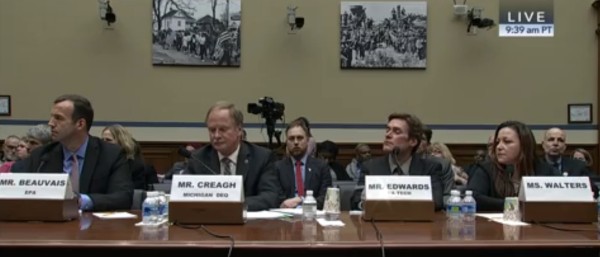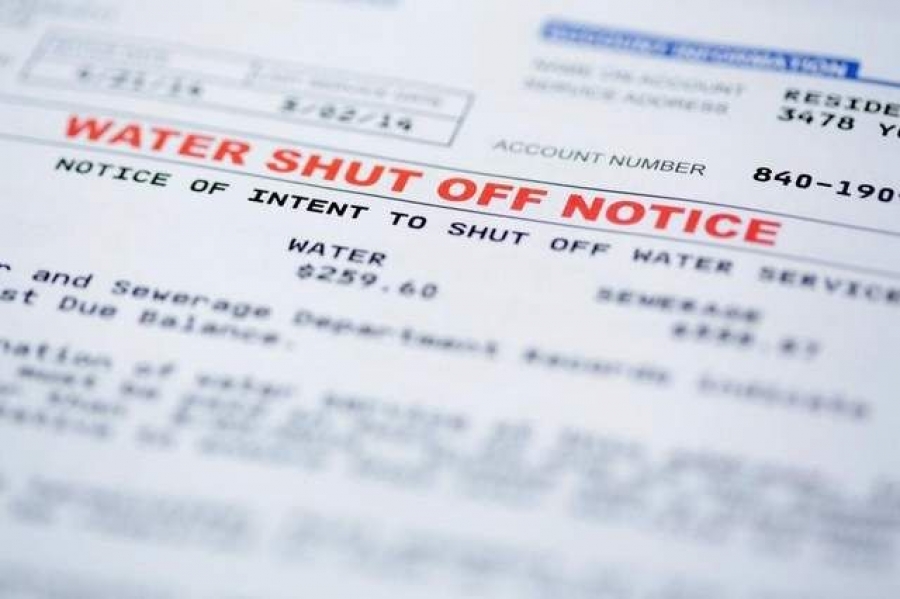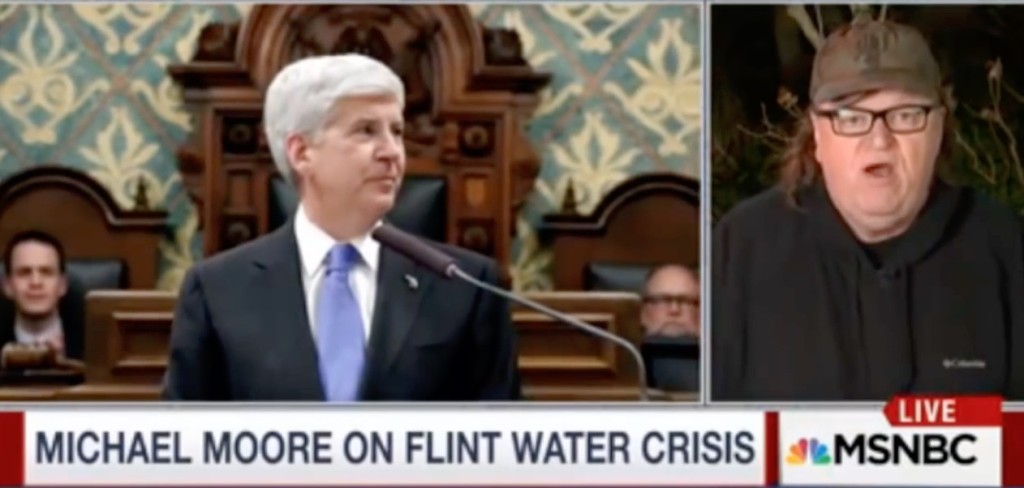
Watch and share these short, animated cartoon videos about critical ocean issues. Fun to watch, chock full of good information! From The Pew Charitable Trusts and cartoonist Jim Toomey, the artist behind “Sherman’s Lagoon”.
Category Archives: Protection
Breaking! EPA finalizes plan to decontaminate Newark Bay & lower Passaic River
Today marks the end of corporate profits over communities says @SenatorMenendez #CleanPassaic pic.twitter.com/Ju8qhk7Aa4
— NY/NJ Baykeeper (@NYNJBaykeeper) March 4, 2016
After years of investigating safety issues involved with removing Agent Orange and other contaminants from the Newark Bay and lower Passaic River, the EPA has created a comprehensive plan to remove what is logistically feasible and cap the rest at the bottom of the waterway.
The plan includes:
- 3.5 million cubic yards of contaminated sediment will be removed, bank- to-bank, by dredging the river bottom from Newark Bay to the Belleville/ Newark border.
- This will result in the permanent removal from the river of approximately 13 pounds of highly toxic and persistent dioxin (2,3,7,8- TCDD), 24,000 pounds of mercury, 6,600 pounds of PCBs, and 1,300 pounds of DDT (a pesticide).
Here are highlights of the plan:

View the entire record of decision for the lower eight miles of the Passaic River.
The Shangri-la source of all the world’s apples is under threat of destruction

After sequencing the entire genome, scientists have traced 90% of the billions of apples that have ever been, back to the Malus sieversii – the original wild apple.
This species was born deep in the heart of the Tien Shen forests – where dense covers of apple trees dominated the hilly, remote mountain ranges.
The reason most apples have that classic, sweet ‘apple’ flavour is funnily enough, because of bears.
In these Kazakh forests, bears, being the picky buggers that they are, would only pick and eat the sweetest apples.
Then they’d go and wander around poop everywhere and the seeds of these sweet, delicious apples were spread around.
Today, tourism and deforestation are threatening the Kazakh region’s, “highly disease resistant, sweet, and hard,” apple trees. Due to centuries of inbreeding, the genetic structure of apple varieties outside of Kazakhastan has become fragile and their immune systems are weak. Fruit from Kazakh trees has the power to save apples around when seedlings from their stock is merged with genetically weaker varieties the rest of us know and love.
We must protect our apples!
State Sens. Gordon & Weinberg ask why NJ did not get most of the Sandy recovery funds HUD wanted to give us

For New Jerseyans, who suffered more heavily from the ravages of superstorm Sandy than the residents of any other state, last month’s announcement of federal disaster resilience grants by the U.S. Department of Housing and Urban Development hit like a nor’easter.
Of the $1 billion being awarded by HUD in Natural Disaster Resilience Competition grants, a minimum of $181 million had been set aside for New Jersey and New York thanks to the hard work of our congressional delegation.
That’s why it was so shocking when New Jersey received just $15 million.
New York City and New York State received a total of $212 million, but New Jersey ranked 14th on the grant list, just ahead of the city of Springfield, Massachusetts. The last time we looked, Springfield didn’t have much of a coastline.
The state’s failure is just the latest example of New Jersey coming in way behind New York in obtaining federal aid to rebuild after superstorm Sandy. New York City and New York State received $8.6 billion in Community Development Block Grants — twice as much as New Jersey’s $4.2 billion — and the $1.7 billion we received in Federal Emergency Management Agency grants is dwarfed by the $7.7 billion that went to New York.
That is why Senate President Stephen Sweeney asked our Senate Legislative Oversight Committee to open hearings on why New Jersey has consistently failed to obtain the funding needed to protect residents from Bergen County to Cape May from the ravages of coastal and inland flooding, and on what we should be doing to protect the state against sea-level rise and climate change.
Our first hearing earlier this month started to get some answers, and we will have a fuller understanding when officials from HUD, the state Department of Environmental Protection and the Rockefeller Foundation, which was retained by HUD to advise applicants, appear before the committee at a future hearing.
NorthJersey.com reports on the NJ Legislative Oversight Hearings held on 11 February 2016:
Several witnesses … raised questions about what New Jersey chose to include and not include in its application, including a bus station in the Meadowlands.
“One of the things about this application that really astonished me and I still don’t understand and I just wished someone could explain it to me in a way that makes sense, is how building a bus station in the Meadowlands protects anybody from flooding?” said Bill Sheehan of the Hackensack Riverkeeper environmental group.
Sheehan, after the hearing, questioned whether requests like that had less to do with flood control and more to do with the fact that the state’s Transportation Trust Fund is nearly out of money.
This is not a partisan issue. As Republican Sen. Joseph Kyrillos, who represents the Monmouth County Bayshore that suffered some of the most severe damage from Sandy, said at the hearing, it is the responsibility of the Legislature to hold federal and state officials accountable.
What we learned so far is just the beginning of that process.
We already know that HUD Secretary Julian Castro said New Jersey received less funding not because the state did not have great need for storm resilience projects, but because our application was weaker than most other states. In fact, we just made the minimum cutoff to receive any funding at all.
While most winning applicants identified significant matching funds and were working closely with regional nonprofits on climate change initiatives, New Jersey received just 1 point out of a possible 10 for “leveraging” other funding. Furthermore, we also got marked down on “scalability” for failing to present proposals that could be implemented even if we only received partial funding.
We need to find out if the state received adequate feedback from HUD and the Rockefeller Foundation that deficiencies in our proposal could jeopardize our chances to win the needed funding. But there are clearly questions at the state level as well.
New Jersey’s two main proposals were for a $231 million grant for construction of a berm and pumping stations to protect towns in the Meadowlands from flooding and for a $75 million satellite bus garage in Secaucus.
What our initial hearing showed was that the Meadowlands berm project was controversial — and indeed was opposed by environmentalists. And, as we pointed out, a proposal for a $75 million bus garage seems less like a proposal to protect the Meadowlands against climate change than an attempt to get the federal government to pay for a new bus garage because the Transportation Trust Fund is out of money.
The most disconcerting part of the hearing was the heart-wrenching testimony by Monmouth and Ocean County Sandy survivors who rightfully questioned why New Jersey did not apply for any funding for projects to protect homeowners in the Jersey Shore counties that sustained the lion’s share of Sandy damage.
Questions also were raised about whether New Jersey’s reluctance to embrace climate change gave HUD “political reasons” to deny our application. While New York State has developed a comprehensive mitigation and adaptation plan, is mapping for climate change and sea-level rise, and is increasing its green building and energy efficiency standards, New Jersey is the only state bordering either the Atlantic or Pacific Ocean that does not have a plan to deal with climate change and sea-level rise.
As a coastal state that relies so heavily on tourism to drive our economy and boost state revenues, we cannot afford to ignore the challenges posed by climate change and sea-level rise, and we certainly cannot afford to lose out on federal grants designed to protect our citizens against the ravages of future megastorms.
We need to know why we fared so poorly on federal Sandy grant funding, and we need to know how we can do better in the future. The victims of Sandy deserve no less.
Sen. Bob Gordon, D-Bergen/Passaic, and Senate Majority Leader Loretta Weinberg, D-Bergen, serve as chair and vice-chair of the Senate Legislative Oversight Committee.
Additional Sandy recovery coverage available at Asbury Park Press
Landowners near Scranton & activists set to face off against Pipeline builders who will clear cut their trees

Very possibly as early as tomorrow, chain-saw-armed tree cutters hired by Williams Partners, a powerful pipeline-building corporation for the gas and oil industry, will try to cut down sugar maple trees on the property of Maryann Zeffer, Cathy and Megan Holleran and their family. For 65 years they have lived on this land, and for the last ten or so they have been producing delicious, pure, Pennsylvania maple syrup from those trees.
This destruction won’t happen without a big fight. Nine days ago as I write, after FERC gave approval to Williams’ request to start tree cutting in Pa. even though Williams does not have all of the necessary approvals to build their Pa. to NY Constitution pipeline, an encampment was set up on the Zeffer/Holleran land. Every day since people have been there.
The implacable Williams Partners pipeline builders aka land destroyers and water polluters, has obtained the go-ahead from FERC to begin clear-cutting more private land on 160 Pennsylvania properties than they need to lay a pipeline for transporting fracked fuel through Pennsylvania to New York. Williams got the red light to proceed even though they lack all the necessary permits and have not paid for some of the land they plan to access. They acquired some of the land through eminent domain seizure and will cut down more trees than the pipeline requires to give themselves “working space”.
The families of Cathy and Megan Holleran and Maryann Zeffer fought the pipeline builders in court for well over a year. With tree felling now about to begin, they’ve taking their battle to the public. Anti-fracking/anti-pipeline and clean water activists, environmentalists and the press have been summoned to witness the Holleran/Zeffers take a stand against the usurpation of their land rights and the destruction of their beautiful maple syrup kingdom and stand with them, if they’re willing to risk being arrested. These people’s little slice of Paradise is a 1/2 hour drive north of Scranton, PA.
The family loves these 22 acres that Catherine Holleran’s parents bought in the late 1950s, when they escaped to the Endless Mountains from Long Island.
Sturdy maples, cherries and other hardwoods rise from their property’s steep eastern hillside. A small creek-fed lake lies at the bottom of the gentle valley. Across a strip of trees, a grassy field rises to the north. It’s a place for syrup making and snowmobiling in the winter, lake parties and off-roading in the summer.
Constitution’s designs call for a 30-inch pipe laid in an S-shaped strip across 1,670 linear feet of their land. The permanent easement would be 50 feet wide, but the company would fell timber in a wider area to create work space. The family doesn’t want to lose the trees or the quality of their lake, which they fear could fill with sediment despite the company’s stated policies of controlling erosion.
The five Zeffer siblings — Ms. Holleran’s maiden name — want to pass the land on to their children the way it is, “without a big stupid pipeline,” Ms. Holleran said.
Hollywood Actor James Cromwell joined a family's fight to save maple trees from a pipeline project in Susquehanna Co pic.twitter.com/NKdxVQRVG3
— Jon Meyer (@JonMeyerWNEP) February 5, 2016
If you wish to join or support the resistance, here’s the information you need:
Holleran property is at 2131 Three Lakes Road, New Milford, PA. But use these coordinates to find the location where people have gathered to stop the tree cutting: 41.8272387, -75.7585062
Contacts: Megan Holleran 570-709-3268 and Alex Lotorto (after 5PM) 570-269-9589
Visit Stop the Constitution Pipeline Facebook group
Hat tip to Theresa Lam for the share
Flint decision makers no-shows at today’s Congressional hearings on Flint Water Crisis. Scary situation.

The Congressional hearing on the Flint Water Crisis was live streamed this morning, 03 February 2016.
Michigan Gov. Snyder and officials he appointed who made the decision for the City of Flint to stop receiving water from the Detroit Water Company and get it from the contaminated Flint River instead, have elected not to be present at the hearings. Detroit had been Flint’s supplier of clean, fresh water for over 50 years.
After Snyder nullified Flint’s election and put former “Emergency City Manager” Darnell Early in place there, the decision was made during his term of service from 2013-2015, to change the city’s water source to the Flint River. The decision to not spend $9000 for three months of corrosion control treatment to seal the pipes carrying the water was made, even though this is an EPA requirement. Treatment would have prevented the river’s contamination from causing lead and other heavy metals to flake off from corroding pipes to enter the city’s potable water supply.
High lead levels resulting from the corrosion have caused irreversible, permanent lead poisoning to all of Flint’s children who drank the contaminated water, which is probably all of the city’s 9000 children. Lead is a neurotoxin which shortly after ingestion, causes damage which commonly includes brain damage. Resident Mrs. Leeann Walters speaks of her own child and other Flint children whom suffer from a panoply of symptoms including liver damage, slow weight gain and poor eye health. On Earth reports:

LeeAnne Walters’ four children started getting sick around November of last year. Her 14-year-old, J.D., was in and out of the hospital, and her four-year-old twins, Garrett and Gavin, would get scaly, itchy rashes whenever they took a bath. “I could see the water line on Gavin’s stomach,” Walters says. In February, the pediatrician wrote a note to the city saying that Gavin, who has a compromised immune system, couldn’t consume the water.
City officials came out to test the Walters’ tap that same month and found lead levels at 397 parts per billion. For reference, anything greater than 15 ppb—what the U.S. Environmental Protection Agency considers an acceptable level—can result in irreversible damage to a child’s brain.
Mr. Early chose to evade service of the subpoena summoning him to the Congressional hearings and is also not present. On a side note, Early was appointed by Gov. Snyder to serve as Detroit Public Schools “Emergency Manager” at an annual salary of $221,000 after leaving Flint in Jan 2015 . But Early has announced that he will step down from that position on 29 Feb 2016.
Cong. Stacey Plaskett of the US Virgin Islands, points out that Mr. Early received $181,000 for poisoning Flint’s children, and that this situation is an example of the powerful adverse health impacts that residents of environmental justice communities may experience.
Several Congressmen have asked the EPA representative present at today’s hearing to explain why the EPA failed to notify Flint residents when the lead and copper rule failure was discovered a year before the issue became known to the public.
Flint native and film maker Michael Moore is on the ground, researching and reporting on the situation. I’m sorry to say that it looks even worse up close than it does from a distance. Moore’s first point:
While the Children in Flint Were Given Poisoned Water to Drink, General Motors Was Given a Special Hookup to the Clean Water.
A few months after Governor Snyder removed Flint from the clean fresh water we had been drinking for decades, the brass from General Motors went to him and complained that the Flint River water was causing their car parts to corrode when being washed on the assembly line. The Governor was appalled to hear that GM property was being damaged, so he jumped through a number of hoops and quietly spent $440,000 to hook GM back up to the Lake Huron water, while keeping the rest of Flint on the Flint River water. Which means that while the children in Flint were drinking lead-filled water, there was one — and only one — address in Flint that got clean water: the GM factory.

What you all have done has given us … a platform, the basic information … to go higher. I hope that the governor (Snyder) will understand that these are people who are suffering … About the water bills: If I’m being poisoned, can’t wash with the water, can’t drink the water and then I’m being asked to pay for the water, that doesn’t make any sense. (This is) about what happened – so you can correct it and so hopefully, it doesn’t happen again.
Michael Moore reports from Flint on the Flint Water Tragedy

Flint native and film maker Michael Moore arrived in the city a couple of weeks ago and went right to work gathering information about the origin and extended impact of what’s being nationally referred to as the “Flint Water Crisis”. He has released his article 10 Things They Won’t Tell You About the Flint Water Tragedy. But I Will.
Organic food industry is being overtaken by mega corporations – take a look

Assoc. Prof. Phil Howard of Michigan State University tracks the evolution – or degeneration – of the United States’ organic food standard. Howard told the WaPo,
It’s easier than ever to access to foods,” he said, “and the prices have come down. On the other hand, there is continual pressure to weaken the national organic standards to increase profits – and the big companies have the clout to do that.
Still, it’s disconcerting to learn that organic has become corporatized, and Howard certainly isn’t the only sustainability professional concerned about the trend. Ronnie Cummins of the Organic Consumer’s Association explains what the fuss is all about:
While Cummins believes that this is still largely true in practice, he says that this will change over time. I see some troubling trends, especially in organic dairy. In that sector there is a major move toward moving production from family farms to industrial feedlot factory farms. Horizon controls 70% of the US organic dairy market, and last year it was bought by Dean Foods, he told CorpWatch..
³No way in hell can you be organic if you have over a few hundred cows. After a certain size, the operation cannot be ecologically sound anymore, among other things because of the amount of manure produced, added Cummins.
³In California there are huge organic farms that produce organic lettuce and carrots in large monocultures, using large energy inputs and receiving subsidized water- three elements that are anti-environmental and unacceptable for those who want ecologically sound farming, he adds.
In a 2002 study conducted at the University of California at Davis, Karen Klonsky documents that organic food production in California is already concentrated. Two percent of organic farm operations, about 27 growers, bring in over $1 million a year and represent over half of the organic sales in the state.
Indeed while over 90% of all U.S. farms are categorized by the USDA as small, the other 10% — big agribusiness — provide approximately 60% of all food sales.
Michigan AG seeks to block Flint from turning off poisoned people’s water altogether

The city’s top officials switched from clean water supplied by Detroit for a source that has corroded pipes and led to horrific health effects. The reason for the switch was not motivated by money.
Now, Attorney General Bill Schuette has launched an investigation and he hopes to provide relief to the beleaguered community. NBC reports:
Michigan’s top prosecutor said Monday that it’s an “outrage” that residents of Flint are being forced to pay for water that’s unsafe to drink — and his office may take action to stop the billing.
“Words can barely describe this tragedy. Things went terribly wrong,” AG Bill Schuette said. “I would certainly not bathe a newborn child or a young infant in this bad water and if you can’t drink the bad water you shouldn’t pay for it.”
Flint Residents Are Still Being Forced to Pay for Contaminated Water 0:19
Schuette said his office has begun investigating what steps it could take to provide financial relief to the people of Flint, who were subjected to chemical byproducts, E. coli, Legionnaires’ disease and lead after the city’s water source was switched to the corrosive Flint River in 2014.It was unclear if Schuette could stop Flint from shutting off water to families who don’t pay their bills … Schuette’s office has launched a criminal investigation into the water emergency to see if any laws were broken, and he announced Monday that a former FBI chief and an ex-prosecutor will lead the probe and report directly to him.
Snyder lied: the reason for poisoning people of Flint was NOT money

The switch was made at the direction of an Emergency City Manager appointed by Gov. Rick Snyder.
A high-ranking DWSD official told us today that Detroit offered a 50% reduction over what Flint had been paying Detroit. In fact, documents show that DWSD made at least six proposals to Flint, saying “the KWA pipeline can only be attributed to a ‘political’ objective that has nothing to do with the delivery – or the price – of water.”
The offer by DWSD raises serious questions about whether Gov. Rick Snyder was lying when he insisted the water switch was motivated by saving money for Flint, which was under the control of a state emergency manager.
“When compared over the 30 year horizon the DWSD proposal saves $800 million dollars or said differently – saves 20% over the KWA proposal,” then-DWSD Director Sue McCormick said in the e-mail dated April 15, 2013.
Flint native and filmmaker Michael Moore has been on the ground for a couple of weeks, looking into what happened and what can be done to help the good people of the city.